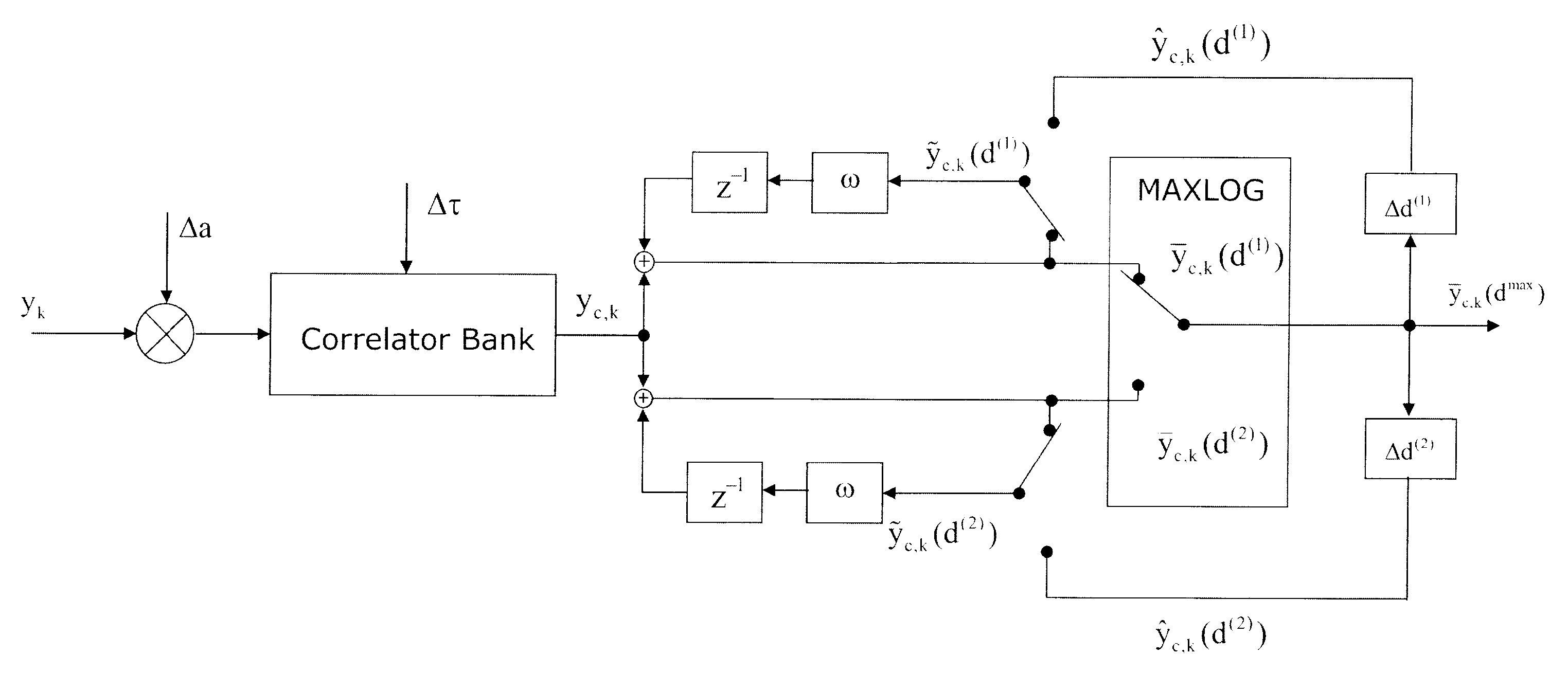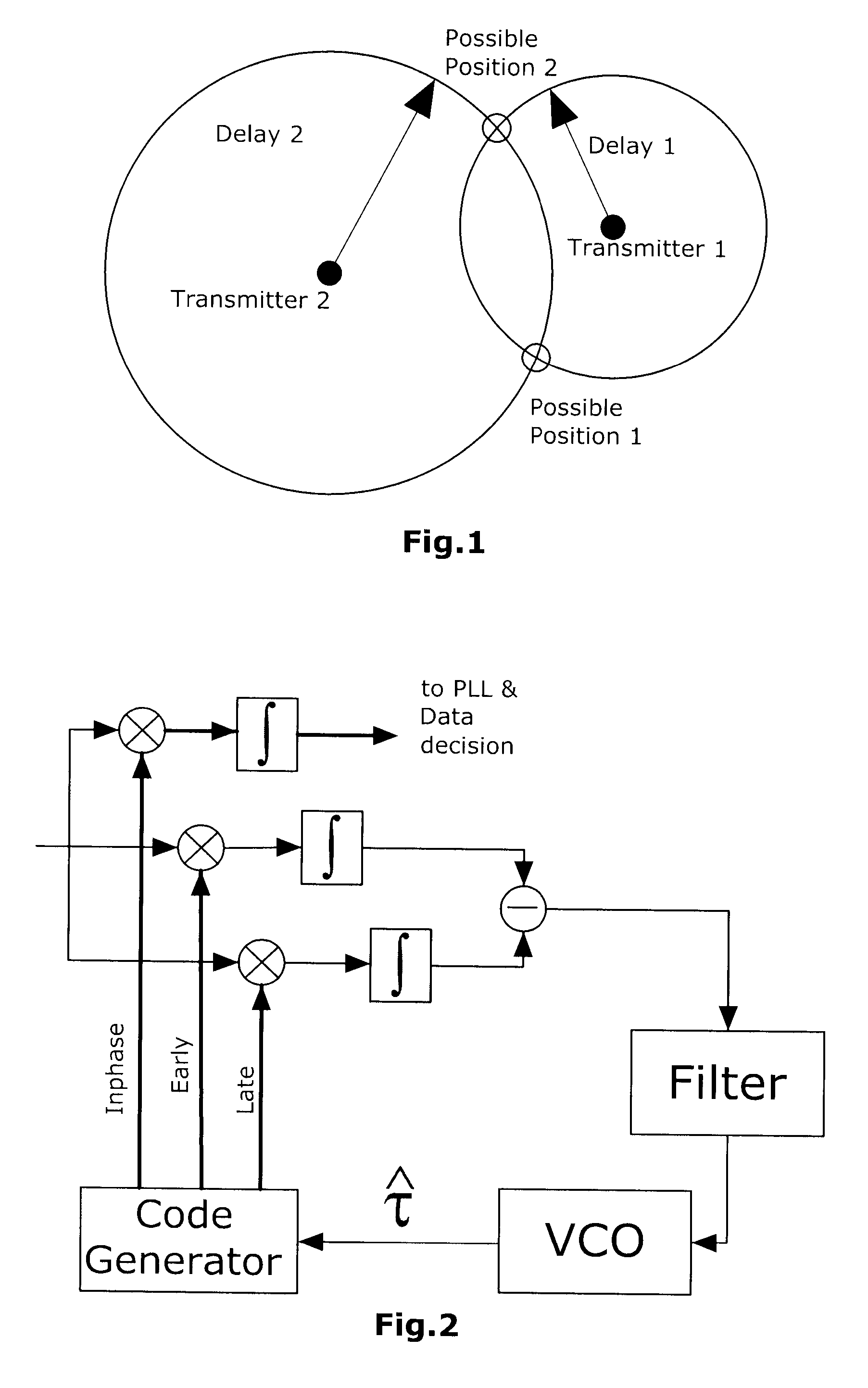Method for estimating parameters of a navigation signal
a navigation signal and parameter estimation technology, applied in direction finders, navigation instruments, instruments using radio waves, etc., can solve the problems of inability to consider, increase the probability of losing lock, and errors in position estimation, so as to improve performance, reduce spacing, and estimate delay better
- Summary
- Abstract
- Description
- Claims
- Application Information
AI Technical Summary
Benefits of technology
Problems solved by technology
Method used
Image
Examples
Embodiment Construction
[0038]In particular high complexity arises from the evaluation of the likelihood, which requires operations upon a data set of many thousand samples for each code period of the received signal. Thus, within conventional navigation receivers tracking loops are used for estimating the signal parameters. It can be shown that signal compression techniques can overcome the problem of computational complexity, as the likelihood function can be formulated efficiently upon a reduced data set of much smaller size compared to the original data, where the reduced data set forms a sufficient statistic for the estimated signal parameters. As a consequence the evaluation of the likelihood becomes feasible with moderate cost, which allows an improved information hand over from the signal parameter estimation part to the navigational part of the receiver. Within this paper a novel approach for integrating a conventional tracking loop with a likelihood evaluator is proposed. It is shown that for the...
PUM
 Login to View More
Login to View More Abstract
Description
Claims
Application Information
 Login to View More
Login to View More - R&D
- Intellectual Property
- Life Sciences
- Materials
- Tech Scout
- Unparalleled Data Quality
- Higher Quality Content
- 60% Fewer Hallucinations
Browse by: Latest US Patents, China's latest patents, Technical Efficacy Thesaurus, Application Domain, Technology Topic, Popular Technical Reports.
© 2025 PatSnap. All rights reserved.Legal|Privacy policy|Modern Slavery Act Transparency Statement|Sitemap|About US| Contact US: help@patsnap.com



